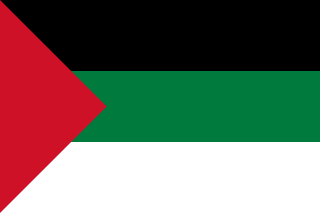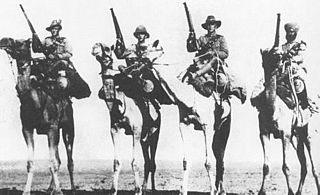 W
WThe Arab Revolt or the Great Arab Revolt was a military uprising of Arab forces against the Ottoman Empire in the Middle Eastern theatre of World War I. On the basis of the McMahon–Hussein Correspondence, an agreement between the British government and Hussein bin Ali, Sharif of Mecca, the revolt was officially initiated at Mecca on June 10, 1916. The aim of the revolt was to create a single unified and independent Arab state stretching from Aleppo in Syria to Aden in Yemen, which the British had promised to recognize.
 W
WAhmed Djemal Pasha, also known as Cemal Pasha was an Ottoman military leader and one of the Three Pashas that ruled the Ottoman Empire during World War I.
 W
WFaisal I bin Al-Hussein bin Ali Al-Hashemi was King of the Arab Kingdom of Syria or Greater Syria in 1920, and was King of Iraq from 23 August 1921 to 1933. He was the third son of Hussein bin Ali, the Grand Emir and Sharif of Mecca, who was proclaimed as King of the Arabs in June 1916. He was a 38th-generation direct descendant of Muhammad, as he belongs to the Hashemite family.
 W
WFakhri Pasha or Fahreddin Pasha, known as Ömer Fahrettin Türkkan after the Surname Law of 1934, was a Turkish career officer, who was the commander of the Ottoman Army and governor of Medina from 1916 to 1919. He was nicknamed "The Lion of the Desert" and "The Tiger of the Desert" by the British and Arabs for his patriotism in Medina and is known for defending Medina in the Siege of Medina during World War I.
 W
WThe flag of the Arab Revolt, also known as the flag of Hejaz, was a flag used by the Arab nationalists during the Arab Revolt against the Ottoman Empire during World War I, and as the first flag of the Kingdom of Hejaz.
 W
WThe Imperial Camel Corps Brigade (ICCB) was a camel-mounted infantry brigade that the British Empire raised in December 1916 during the First World War for service in the Middle East.
 W
WColonel Thomas Edward Lawrence was a British archaeologist, army officer, diplomat, and writer, who became renowned for his role in the Arab Revolt (1916–1918) and the Sinai and Palestine Campaign (1915–1918) against the Ottoman Empire during the First World War. The breadth and variety of his activities and associations, and his ability to describe them vividly in writing, earned him international fame as Lawrence of Arabia, a title used for the 1962 film based on his wartime activities.
 W
WJames Erasmus Tracy Philipps was a British public servant. Philipps was, in various guises, a soldier, colonial administrator, traveller, journalist, propagandist, conservationist, and secret agent. He served as a British Army intelligence officer in the East African and Middle Eastern theatre of the First World War, which led to brief stints in journalism and relief work in the aftermath of the Greco-Turkish War. Joining the Colonial Office, his reform-minded agenda as a District Commissioner in Colonial Uganda alienated superiors and soon resulted in the termination of his position.
 W
WThe Sharifian Army, also known as the Arab Army, or the Hejazi Army was the military force behind the Arab Revolt which was a part of the Middle Eastern theatre of World War I. Sharif Hussein Ibn Ali of the Kingdom of Hejaz, who was proclaimed "Sultan of the Arabs" in 1916, led the Sharifian Army in a rebellion against the Ottoman Empire with the ultimate goal of uniting the Arab people under an independent government. Aided both financially and militarily by the British, Husayn's forces gradually moved north through the Hejaz and, fought alongside the British-controlled Egyptian Expeditionary Force, eventually capturing Damascus. Once there, members of the Sharifian Army set up a short-lived monarchy known as the Arab Kingdom of Syria led by Faisal, a son of Sharif Husayn.